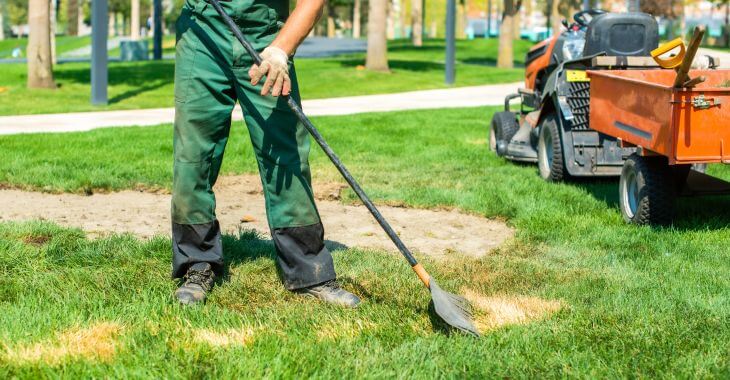Causes and Treatment of Brown Patch Disease
Did your lawn suffer from brown patches throughout your yard this last summer? Brown patch disease is common in many regions of the country, especially in the southeast. This turf disease is actually a fungus that can weaken the grass and cause brown or black patches in your lawn. Understanding what causes this disease and how you can prevent or treat it can help you avoid this turf problem in the future.
Causes of Brown Patch Disease
The fungus Rhizoctonia solani is what causes brown patch disease. This fungus will flourish in humid areas, especially lawns with poor drainage or pooling. While irrigation is necessary to water your lawn, make sure there are not areas that are oversoaked or have un-level spots where water can pool.
Another key preventative option is ensuring your lawn is properly fertilized. Too much nitrogen can attract the fungus that causes brown patch disease. Under-fertilizing can also put your lawn at risk. Talk to your local landscaper to find the right balance to your fertilization to keep brown patch disease at bay – they can test your soil and find the right option for you.
Treatment for Brown Patch Disease
Once the Rhizoctonia solani fungus has taken hold, it must be treated to get your lawn back to health. Your local landscaper can help you find the right treatment to kill the fungus, while offering changes to your irrigation, drainage and fertilization to ensure it does not come back in the future.
Brown patch disease typically is a spring through fall turf problem, lying dormant in the winter months. Now is the time to get your lawn healthy to be ready to combat this disease before next spring.
Posted on behalf of:
Pannone’s Lawn Pros & Landscaping
Cumming, GA
(678) 294-0351

